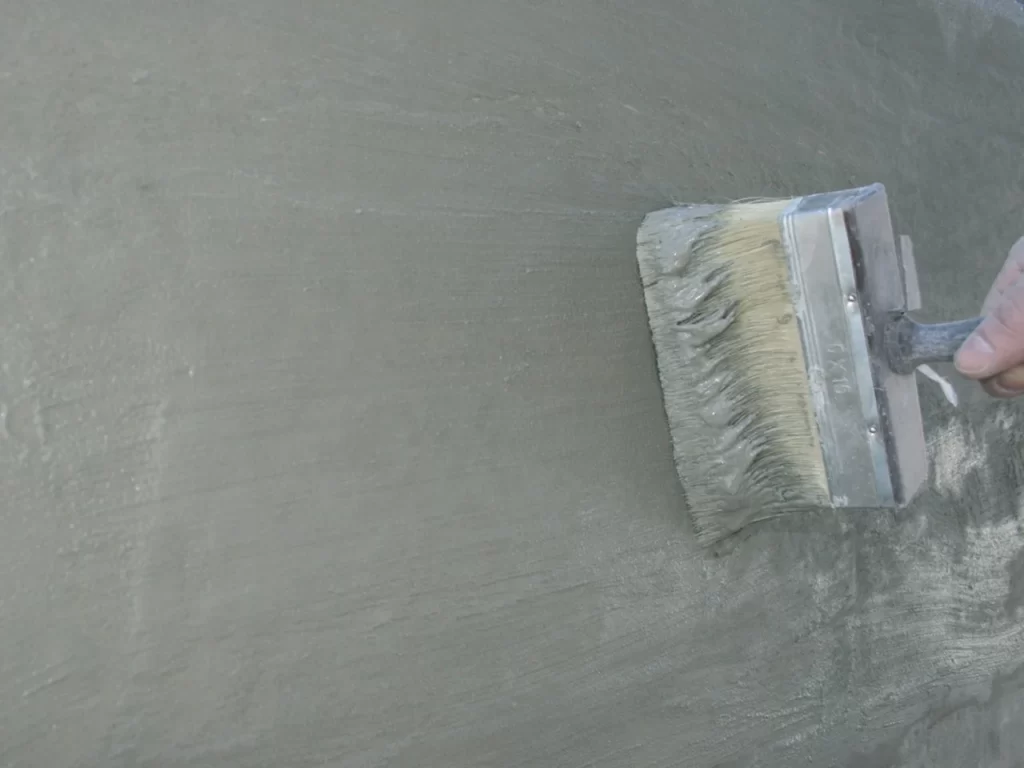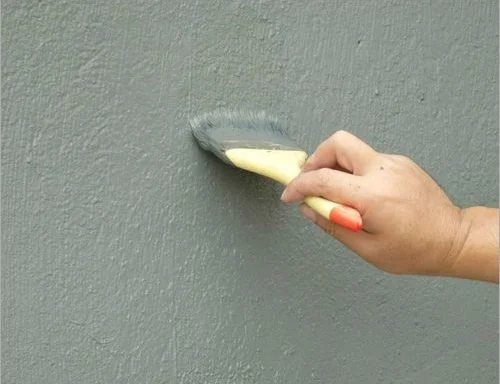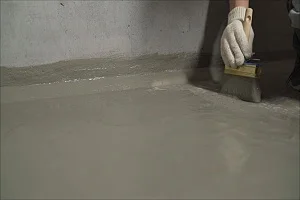1.POLYMER MODIFIED CEMENTITIOUS waterproofing COATING
Description:
Polymer modified cementitious waterproofing coating is a type of coating that is used to protect concrete and masonry surfaces from water damage. It is a mixture of cement, sand, and polymer additives that make it more flexible and resistant to cracking than traditional cement-based coatings. The polymer additives also enhance the coating’s ability to resist water penetration and increase its durability. Two component cementitious coating system for waterproofing of wet areas and any water retaining structures such as swimming pools and water features.


Some benefits of polymer modified cementitious waterproofing coatings include:
- Resistance to cracking and peeling
- Enhanced waterproofing capabilities
- Improved adhesion to concrete and masonry surfaces
- Durability and resistance to UV exposure
- Breathability, allowing for moisture to escape
When using polymer modified cementitious waterproofing coatings, it’s important to properly prepare the surface to ensure proper adhesion and performance. The surface should be clean, dry, and free of any contaminants or loose material.
There are several different types of polymer modified cementitious waterproofing coatings available on the market, each with their own unique properties and applications. It’s important to select the right coating for your specific needs and consult with a professional if necessary.
Uses:


- Any concrete, cement or masonry surface that are subject to moisture ingress.
- Swimming pools, water features and water tanks.
- Bathrooms, toilets, balconies, planters etc.
Application instructions
The application instructions for a high-performance polymer modified waterproofing coating system may vary depending on the specific product being used. However, here are some general guidelines:
- Surface Preparation: The surface to be coated should be clean, free of dust, oil, grease, and other contaminants. Any cracks, voids, or holes should be repaired with a suitable filler. The surface should also be dampened with water before applying the coating.
- Mixing: Follow the manufacturer’s instructions for mixing the coating material. Typically, the coating will consist of two components: a liquid polymer and a powder mix. Mix the components thoroughly to ensure a consistent texture and color.
- Application: Apply the coating material with a trowel, brush, or roller in a thin, even layer. Start at one end of the surface and work your way to the other end, overlapping each section slightly. Apply a second coat after the first coat has dried.
- The application instructions for a high-performance polymer modified waterproofing coating system may vary depending on the specific product being used. However, here are some general guidelines:
- Surface Preparation: The surface to be coated should be clean, free of dust, oil, grease, and other contaminants. Any cracks, voids, or holes should be repaired with a suitable filler. The surface should also be dampened with water before applying the coating.
- Mixing: Follow the manufacturer’s instructions for mixing the coating material. Typically, the coating will consist of two components: a liquid polymer and a powder mix. Mix the components thoroughly to ensure a consistent texture and color.
- Application: Apply the coating material with a trowel, brush, or roller in a thin, even layer. Start at one end of the surface and work your way to the other end, overlapping each section slightly. Apply a second coat after the first coat has dried. Apply second coat at right angles to the first coat.
- Curing: Allow the coating to cure for the recommended time, typically 24 to 48 hours, before exposing it to water or other moisture. Curing time may vary depending on the temperature and humidity.
- Inspection: After the coating has cured, inspect the surface for any imperfections or areas that may need touch-up. Apply additional coating material as necessary.
- Maintenance: Regular maintenance of the coating system can help prolong its lifespan and effectiveness. Follow the manufacturer’s recommendations for maintenance, such as cleaning and reapplication.


It’s important to follow all safety precautions and guidelines when working with waterproofing coatings, such as wearing protective clothing, gloves, and eye protection. Always read and follow the manufacturer’s instructions carefully. If you’re unsure about the application process, consult with a professional.
Coverage
Approximately 0.75 – 0.8 m2/kg in 2 coats at 1.2 – 1.5 mm DFT
Coverage may vary depending upon the nature and texture of the substrate
GEOLIZ WATERPROOFERS PVT. LTD.
Waterproofing Products & Services Guide
For details on other waterproofing products & Services
